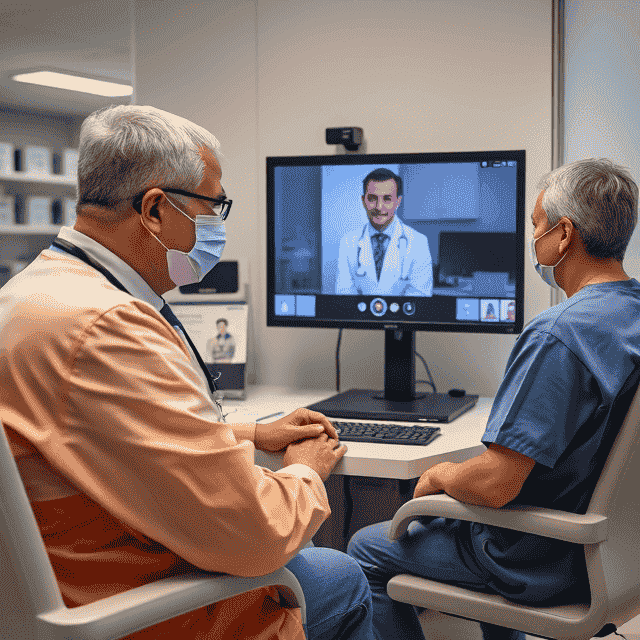Specialty-specific EHR requirements are the most important to be considered when taking in context the superior patient health. In this complex landscape of healthcare technology, one size decidedly does not fit all. Electronic Health Records (EHR) systems that serve a family medical practice brilliantly may prove to be disappointingly insufficient for the dermatology clinic or orthopedic surgery center. According to a 2024 survey by the American Medical Association, 37% of the doctors report significant dissatisfaction with their current EHR system, special physicians referring to “poor workflow alignment” as their primary complaint. This misalignment not only produces daily frustration, but directly affects the quality of the patient’s care, practice efficiency and physician burnout rates.
Table of Contents
Primary Care EHR requirements: width, integration and prevention
Primary care practices serve as the front door of healthcare, requiring the EHR system that handles the exceptionally detailed clinical scenarios while maintaining the purpose. Effective primary care EHRs should excel on rapid documentation in various conditions, from the pediatric well visits to medical care.
1. Extensive Patient history Management
The system should provide refined chronic consultation ideas that seem to highlight the relationship between unrelated symptoms, leading to a greater comprehensive understanding of the patient’s history. The Temporal visualization tool should facilitate early diagnosis of complex conditions, showing improvements up to 22%. Efficient documentation in a wide range from pediatrics to an omits is required to ensure streamlined workflow. Additionally, EHR should support rapid discovery and filtering of broad longitudinal data, allowing providers to use easily relevant historical information.
2. Preventive Care Tracking and Remover
Advanced population health management devices should automatically flag down or overdue screening, which ensures timely intervention. The AI-Interested Preventive Care Dashboard should analyze several patient factors to generate personal recommendations beyond the basic age-based guidelines. The system should include often updated guidelines from various authorities, keeping the recommendations of preventive care. Personal prevention schemes must take into account patient-specific risks and lifestyle factors to increase prolonged health results.
3. Family health history documentation
EHR efficiently should handle several Comorbidities together, the decision support tools should offer that assist in complex case management. It should include characteristics that flagged potential drug interactions, especially specific to chronic disease groups. Visualization tools should explain how many older conditions interact over time, assist in treatment plan. Additionally, the position-specific monitoring module should provide relevant documentation templates to standardize and simplify chronic disease management.
4. Patient portal and communication facilities
To ensure efficient communication, message should be a safe message system with intelligent routing capabilities based on material. The patient-friendly educational resources should be available, which provide position-specific guidance to suit the requirements of primary care. The portal should also support the appointment scheduling along with travel-length allocation while optimizing provider availability. Additionally, drug refill requests with integrated prescription verification systems to prevent errors and increase patient safety should be streamlined.
5. Integrated chronic disease management equipment
EHR efficiently should handle several Comorbidities together, the decision support tools should offer that assist in complex case management. It should include characteristics that flagged potential drug interactions, especially specific to chronic disease groups. Visualization tools should explain how many older conditions interact over time, assist in treatment plan. Additionally, the position-specific monitoring module should provide relevant documentation templates to standardize and simplify chronic disease management.

Special practice EHR requirements: depth, accurate and visual
While primary care prefers EHR width, special EHR should provide extraordinary depth in narrow clinical domains. Special practices require its unique workflows, documentation patterns and systems manufactured around clinical approaches. Special-specific templates represent the most visible adaptation, but actually effective characteristic EHR goes far beyond surface-level adjustment.
1. Special-specific templates and workflows
The rheumatology system includes specialized combined assessment tools and heat-map visualizations, which enable accurate trekking of the progression of the disease. These systems come with pre-configured templates that align with special-specific documentation requirements, ensure compliance and efficiency. Customable workflows are designed to match the actual practice pattern rather than relying on general processes, which allows for more spontaneous user experience. Additionally, the encounter types have been configured to support special-specific travel structures, streamline clinical workflows and improve documentation accuracy.
2. Special clinical equipment integration
Pulmonology system enables automatic imports of complex datasets with longitudinal comparison capabilities with pulmonology system pulmonary function testing tools. These integrations support the management of ownership data formats from many device manufacturers, which ensure interoperability and data stability. Additionally, these systems maintain data integrity and visual quality in integration, allowing providers to analyze trends and make informed clinical decisions based on accurate clinical data.
3. Process documentation capacity
The gastroenterology system has endoscopy reporting tools that integrate visual findings with biopsy results, creating a comprehensive process record. AI -Classified Documentation reduces the time required for documentation-mainly 30%-maintains accuracy. Structured format supports quality reporting and research requirements, helping providers to meet regulatory and institutional standards. Additionally, these systems integrate process-specific consent forms and track complications, which ensure informed consent and intensive documentation of post-processer results.
4. Image management capacity
Dermatology systems provide refined wound tracking tools that provide detailed visual documentation over time, changing physical areas. High-resolution clinical photography with calibrated color standards ensures accurate color representation, and is important for diagnosis and monitoring of skin conditions. Accurate measurements extend the documentation by allowing tools for quantitative tracking of progression of the wound.
5. Special-specific consent forms
Process-specific risk documentation corresponds to special requirements, ensuring that patients receive clear and relevant information before passing procedures. Digital consent processes include multimedia academic components, improving the patient’s understanding and engagement. Version control mechanisms ensure that consent forms comply with the latest regulatory standards, reduce legal and compliance risks. Additionally, these systems document the patient’s understanding and questions, which make intensive records of informed consent discussions.
Implementation Ideas: Training, Integration and Data Migration
The challenges of implementation vary between primary care and special settings. The relevant feature for special implementation requires trainers with clinical backgrounds who understand unique fine workflows and documentation patterns for the area. Generic EHR trainers often have a lack of special knowledge required to adapt to the system configuration for special-specific requirements. Integration with special-specific medical devices presents special implementation challenges. Successful projects require dedicated technical resources dedicated to both EHR vendors and device manufacturers. The implementation schedule should include sufficient testing periods for each integrated device, with a casual protocol installed for device integration failures.
Leading special practices now include integration specifications in procurement agreements for both EHR systems and medical devices, which ensure compatibility before investment. Data migrations for special practices often include special heritage systems with proprietary data formats. Migration planning should identify significant feature-specific data elements that cannot be lost in infection. For example, ophthalmology practices should preserve detailed visual field testing history, while cardiology practices require full cardiac catheterization reporting data. Successful migrations usually include special-specific mapping tools that protect the clinical context of historical data rather than just move the text.

Future trends: AI, Interoperability, and Telehealth
Artificial Intelligence Applications are developing differently in specifics, causing new EHR requirements. Radiology practices use rapidly AI-Assisted image interpretation tools that are directly integrated with their EHR system, providing initial conclusions and destroying potential abnormalities for radiologist reviews. Dermatology practice takes advantage of AI Tools that aid with wound classification based on clinical photography. The effective EHR system should include these AI findings, while maintaining clear documents that the evaluation came from algorithms vs. doctors. The difference between primary and special care systems represents a significant development in healthcare technology.
Instead of forcing all providers on integrated platforms, emerging standard enabling spontaneous data exchange between customized systems for various clinical requirements. In 2023, the TefCA Framework Implementation established a new technical foundation for this approach, allowing cardiology-specific EHRs to exchange structured data with primary care systems, while each exercise requires. Telehealth integration requirements differ dramatically in specifics. The dermatology practices require high-definition video capabilities with special light assessment devices that help standardize skin evaluation in various patients. Behavior Health Telehealth tools include emotion analysis features that help doctors in assessing emotional states during video encounters. Physical therapy practices use motion evaluation devices that analyze movement patterns through the patient’s camera. Effective EHR systems should support these special telehealth workflows.
What’s next?
The difference between primary care and special EHR requirements will increase as the healthcare technology becomes rapidly refined. Practices that select the systems combine with their specific clinical needs, the physician experiences better consequences in satisfaction, and the quality of patient care. The most successful implementation believes that EHR selection not only represents a technology decision, but is a clinical that must be guided by unique requirements of each medical characteristics.
As healthcare technology develops, a size-fit-all approach becomes rapidly unstable. The future relates to objective-made systems that increase the specific function of each characteristic rather than forcing diverse clinical practices in standardized technical outlines. For healthcare leaders navigating EHR decisions, understanding these special-specific needs is not just beneficial-it is necessary to achieve quality, efficiency and satisfaction that promises effective health technology.

How does Himcos help?
Himcos builds cloud-native, AI-powered software solutions to transform clinical and financial data into actionable insights. Our platform grows alongside your healthcare institution, with features designed to expand with operations. Himcos healthcare workflow development services bridge cross-module healthcare data to eliminate silos and bottlenecks for unified patient journey.



